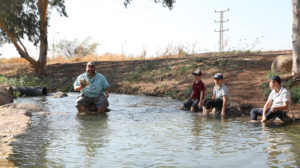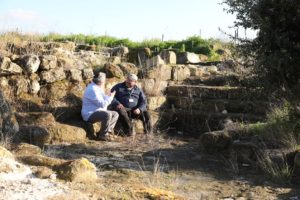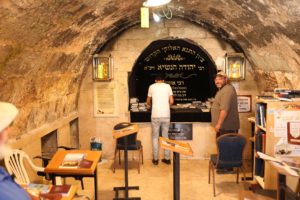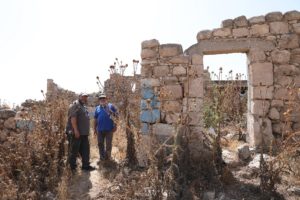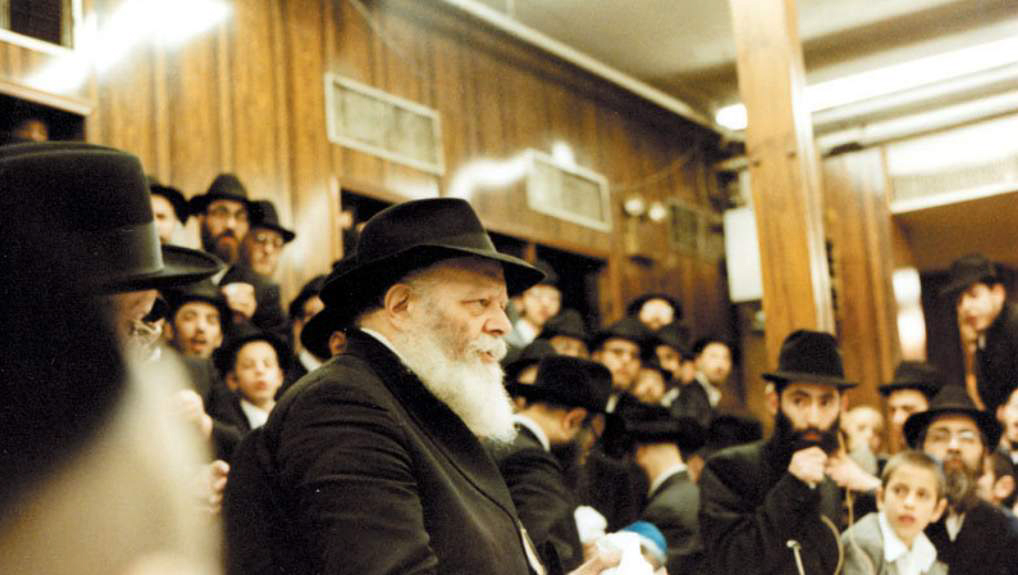Moon Chasers


Total solar eclipses would be much more common if the moon were larger and a total solar eclipse would never occur if the moon were smaller since the moon would never fully conceal the sun. Since the moon and sun are almost identical in apparent size totality only occurs along a narrow path where the moon is positioned precisely in front of the sun. Photos by Ben Wymore
Y ou could say my family and I like traveling.
In August 2013 my wife and two children ages nine and twelve at the time embarked on what we thought would be a one-year RV trip exploring the US Canada and a bit of Mexico. We had enjoyed summer RV trips over the prior three years and decided that our children were now at the right age to get the most out of a one-year trip. They were old enough to tolerate long car rides and remember the experience yet young enough to endure extended periods with their parents.
We rented out our home and drove west homeschooling (or as RVers call it “road-schooling”) our children as we traveled. We thought finding kosher meat would be a problem but it turned out that most Trader Joe’s stores stock kosher ground beef and a few cuts of chicken even in areas with no frum population. With solar panels on the RV’s roof and a sizeable water tank we could easily camp for free on public lands allowing us to stretch our savings and maintain the RV lifestyle. Nine hundred eighty-four days later — a bit off schedule — we returned home to Monsey in the spring of 2016.
During our two and a half years on the road we traveled the length and breadth of this amazing vast continent. We climbed sand dunes and glaciers walked beneath the world’s tallest trees and touched the Arctic Ocean. We strolled through a Mexican village visited our nation’s capital and panned for gold in the Yukon Territory beneath the midnight sun.
In July of this year we set out once more this time with a more modest four-week agenda.
Our end goal was to witness the solar eclipse as it trailed its way across the United States the first viewable eclipse in North America since 1979. A total solar eclipse is a rare event the last one in the United States only visible in a northwestern corner of the country. Last week’s total eclipse was visible along a 70-mile-wide strip across the entire country a phenomenon that last occurred in 1918.

In the following pages I’ll describe some of the highlights of this summer’s trip including the eclipse itself. A complete daily journal of the journey as well as our past trips is available on our online journal LookBeforeYouLive.com. I originally created the website so my stereotypical Jewish mother wouldn’t worry too much about our safety but it turned out to be a great way for our family to relive our past adventures.
And now into the wild.
After heading west from Monsey to Illinois then north and west through Wisconsin Minnesota North Dakota and Montana we turned south and crossed Wyoming to arrive in Colorado. A little over two weeks into our July trip we were high in the San Juan Mountains of southwestern Colorado five rough miles up a gravel road from Lake City Colorado a town of 600 people at over 8 600 feet of elevation.
It was Shabbos afternoon and there was a knock at the door. I answered to find a pair of older women who wanted to engage in a theological conversation.
As it happens, this is something that happened quite a few times on our longer trek across the country in 2013, most memorably one morning in a Walmart parking lot (a favorite urban camping location for RVers, and good business for the store, too) when a well-dressed man knocked on the door and told me he wanted to talk to me “about the lord.”
I declined that time, and, four years later, I once again politely turned these ladies away. “The only sure things in life are death and taxes” goes the famous saying, but it seems missionaries should be included as well.
One of the primary goals of this summer’s trip was to view last Monday’s solar eclipse. In my view, a total eclipse accentuates the celestial perfection of what the Torah refers to as the “two great luminaries,” the sun and moon. Like a thumb held out at arm’s length that conceals a larger but more distant object behind it, the moon’s diameter is roughly 400 times smaller than the sun’s. The moon is also about 400 times closer to the earth than the sun. This relationship causes the moon and sun to have the same apparent size as viewed from the earth. In other words, when viewed from terra firma, the sun and moon occupy a nearly identical amount of sky. Total solar eclipses would be much more common if the moon were larger, and a total solar eclipse would never occur if the moon were smaller, since the moon would never fully conceal the sun.
Since the moon and sun are almost identical in apparent size, totality only occurs along a narrow path where the moon is positioned precisely in front of the sun. For this eclipse, that path was about 70 miles wide, and extended from Washington state in the West to South Carolina in the East. Along the edge of this path, totality would last only a moment, while even along the center of the path, totality would last for less than three minutes.
Sunday, August 13 — Day 19 — Climbing Uncompahgre Peak
On the Sunday after our Shabbos encounter with the missionary, we left our RV parked at our campsite at about 9,000 feet of elevation and drove our truck up to the trail to Uncompahgre Peak, the sixth-highest summit in the Rocky Mountains. The road included two stream crossings. It was also narrow and rocky, so careful tire placement was critical to avoid scraping the underside of our truck. At one point the “road” tilted so sharply that one of the rear wheels of the truck was suspended in the air. After crawling up the five-mile-long road for nearly an hour, we reached the beginning of the trailhead at 11,400 feet of elevation.
Since we had already been at 9,000 feet of elevation since Thursday, we only suffered minor altitude sickness as we ascended the trail. With a summit elevation of 14,321 feet above sea level, Uncompahgre Peak is the highest mountain in the San Juans, the ninth-highest mountain in the Continental US, and less than 200 feet lower than the tallest mountain in the Continental US, California’s Mount Whitney at 14,505 feet.
The trail almost immediately climbed above the “tree line,” the altitude above which trees no longer grow. We passed trickling streams cascading over granite ledges, their frigid waters supplied by melting fields of snow. A bewildering variety of wildflowers swayed in the wind, enticing butterflies with their scent and color in a desperate effort to be pollinated before September snows set in. As we continued to climb, even a relatively slow hiking pace brought out rapid breathing. The air at that altitude contains only 60 percent of the oxygen found at sea level.
Up and up we climbed. As we approached the peak, the grade of the trail got steeper, then got steeper again. We encountered a rock wall that, while not vertical, was steep enough that we were holding on with our hands as well as our feet. The temperature was steadily dropping as we climbed, and we donned gloves, wool hats, and jackets to keep the biting alpine winds at bay. By this time, we were higher than any of the surrounding terrain — and the views were breathtaking. Snow-capped mountain peaks (even in August!) extended as far as the eye could see. I imagined buckskin-clad explorers like Lewis and Clark, trying to find their way to the Pacific Ocean, encountering this vast expanse of rugged peaks in their path.
At last we reached the summit. Despite our high-altitude acclimation, at over 14,300 feet of elevation, we were all suffering from headaches and nausea. But the views, what views! From the summit, a 360-degree panorama of lesser peaks and mountains was visible, layer upon layer, to the horizon. Thrilled with our accomplishment, we ate our lunch and began our descent. Six hours after we began our hike, we were back at the truck.
August 18 and 19 — Days 24 and 25 — Shabbos in Leawood, Kansas
After our Sunday climb, we spent the rest of the week moving east, visiting a number of interesting locations along the way. It was a hot and humid week in Middle America as we drove across Colorado and Kansas. We had previously made arrangements to park at a shul in Kansas City’s Overland Park suburb, but it turned out that the shul had no exterior power outlets. With the forecast calling for humid conditions with temperatures in the low 90s, Shabbos in our RV under the relentless Kansas sun without air conditioning was unlikely to bring out much Shabbos menuchah.
So we made some last-minute calls and were invited by Rabbi Mendy Wineberg to join his kehillah for Shabbos at the Chabad of Leawood, an outer suburb of Kansas City. Also attending as guests were a family from Baltimore and a family from Brooklyn who were in town to view the eclipse, now only two days away. The family from Brooklyn rented an RV in Kansas City and parked it right in front of the shul so they could build an eiruv that allowed their baby to be carried back and forth into the shul.
On Shabbos day, after a nice davening, the shul had lunch together in honor of the one-year anniversary of a member couple. Shabbos in Leawood reminded me of how strong and special small out-of-town communities can be. After Shabbos, our RV neighbors from Brooklyn decided to drive over to a local Walmart and sleep there just to have the experience.
Sunday, August 20 — Day 26 — The Race Is On
On Sunday, we left Leawood and continued east, crossing into Missouri. In the morning, we visited the Harry Truman National Historic Site in Independence, Missouri. We learned about America’s 33rd president, who fought his own State Department to have the US vote for recognition of the fledgling State of Israel in the United Nations. We then continued east to visit Ulysses S. Grant National Historic Site in St. Louis. The National Park Service made no mention of the fact that as a Civil War general, Grant issued General Order 11, which expelled all Jews from portions of Kentucky, Mississippi, and Tennessee. The order was revoked by President Lincoln three weeks later.
We had been watching weather forecasts throughout the day, and with only 18 hours to go, it looked like the St. Louis area had a good chance of cloudy weather, so we decided toward sunset to reposition to the Kentucky-Tennessee border, where the forecast looked much more promising. Some 250 miles later, we arrived in Oak Grove, Kentucky, toward midnight. We overnighted, naturally, at a Walmart.
Monday, August 21 — Day 27 — The Eclipse
In the morning, I was rudely awakened by shouting Walmart employees collecting scattered shopping carts. Overnighting at Walmart is certainly convenient, but doesn’t usually lend itself to a restful night. It was 6 a.m. and the sun had yet to rise, yet the temperature was already in the mid-70s with humidity around 80 percent.
Welcome to southern Kentucky.
After davening, we repositioned the RV to a gravel stub off the end of Walmart’s access road. Exiting the Walmart lot itself, we could now unfurl our awning in an attempt to slow what would be an inevitable rise in the cabin temperature. Our generator is only strong enough to power one of the RV’s two air conditioners, so the best we could hope for that day was reduced humidity inside the RV and a temperature a few degrees cooler than the 95 degrees forecasted outdoors.
The partial eclipse was scheduled to start shortly before noon, so we set up our folding chairs, prepared the binoculars (for totality only), and donned our eclipse glasses. I also set up a small telescope with a solar filter affixed to the end of the telescope, and a photographic adapter that allowed my DSLR camera body to mount directly to the back of the telescope. With the flip of a lever, I could direct the telescope’s light either to the eyepiece or the camera.
We were ready.
Our reposition to Kentucky had paid off: clear skies were in the forecast the entire day. At noon, we watched through solar glasses and a telescope as the moon began its slow crawl in front of the sun. Totality was scheduled for around 1:30 p.m., and by 1 p.m. the air temperature began to fall and the sky started to darken slightly. It wasn’t like sunset; the sun was still overhead. Rather, it was as if one were looking through increasingly dark sunglasses. The effect became extremely pronounced in the last ten minutes before totality. At that point, the temperature had fallen from 90 to about 80, and the sky somehow felt heavy, as if the darkening celestial sphere was pressing down on us.
In the minute or so before totality, the sky darkened rapidly, as if the sun were being controlled by a heavenly dimmer switch. In the seconds before totality, we viewed the sun without the solar glasses and saw the “engagement ring” effect, the last rays of sunlight appearing to shoot off the edge of the moon, creating a light spectacle that resembles a brilliant diamond ring.
Then totality.
We all gasped as the sky went twilight-dark and bright stars and planets sprung to life in the sky. Set on the sky’s dark blue background was the black hole that was the moon. Spreading out beyond the moon’s edge was the sun’s white corona. It stretched away from the moon like a cotton ball being pulled apart. In the binoculars and the now-unfiltered telescope, we could see red prominences (jets of erupting solar plasma) protruding rope-like from the sun’s concealed surface. It was the strangest two and a half minutes of my life. At that moment, the sun had ceased to exist. It was as if creation itself had been profoundly and permanently altered. I was deeply moved by experience, and had to blink back tears as I looked through the binoculars.
As if unwinding a vast celestial mechanism, all the events we witnessed minutes before repeated themselves in reverse. The sun’s edge, impossibly bright, forced itself past the moon’s concealment, creating a second “engagement ring” effect. The light level rapidly “came up” — like at the end of a play when the house lights are turned back on — and the sun began to move away from its temporary prison. The light level slowly increased and Walmart employees and shoppers went back to their activities.
I desperately tried to hang on to what I had experienced, to force into my memory all the strange sensations I had experienced only minutes before.
A few days remain on our trip, and we’ll visit and experience natural wonders and locations of historical significance, but I suspect they’ll all pale in comparison to the 150 seconds of miracle I experienced today. That its occurrence was calculated in advance does not diminish its miraculous nature. As Rav Miller writes in What’s Wrong With Being Happy? “all that exists, all that occurs, is all miraculous, or — viewed from a different perspective — all insignificant, to the Creator of all.”
In what has been called the “golden age of American eclipses,” last week’s eclipse is just the first of three that will occur over the next 28 years. There will be two more cross-country eclipses in 2024 and 2045. In less than seven years, the moon will once again conquer the sun, this time over the skies of upstate New York.
I’ll have a few more wrinkles and hopefully be a bit wiser by then. But if you find yourself at a Walmart near Albany or Lake George, look around. You might just spot a fellow standing in front of an RV bending over a telescope with a pair of solar glasses in his pocket.
I hope to see you then.
—Ben Wymore lives in Monsey, New York, with his wife and two children. He leads guided RV tours and provides RV trip planning at KosherSherpa.com.
The Wonder of It All
The only thing better than a history textbook is visiting actual sites of historical significance. On a 2010 summer trip, we explored the abandoned Heart Mountain Relocation Center in Wyoming, a facility built during World War II to detain over 100,000 Japanese Americans, two-thirds of whom were American citizens. On subsequent trips we visited three other detention centers — Minidoka in Idaho, Manzanar in California, and Amache in Colorado.
Of the 500 barracks and other buildings once here, all that remains of Heart Mountain Relocation Center — at one time the third-largest “city” in Wyoming — is the hospital complex.
Exploring seldom-traveled roads far from civilization often brought us into contact with Hashem’s amazing creations. I photographed this hummingbird feasting on thistle nectar at the Grand Canyon. We’ve also seen javelinas in Texas, grizzly bears and caribou in Alaska, moose in Nova Scotia, and foxes hunting ptarmigans (a bird in the grouse family) in Canada’s Yukon Territory.
A solar eclipse is not the only celestial wonder to behold from alongside an RV. Remote locations like Bears Ears National Monument in southeast Utah are miles from any town or village, and the stars come out with a vengeance once the sun goes down! The fantastic geologic formations there take on an otherworldly appearance when they’re illuminated only by moonlight.
Visiting locations not mentioned in glossy tourist brochures usually rewarded us with interesting discoveries. While exploring a sand dune field near Yuma, Arizona, we discovered wreckage of an Air Force F-4 Phantom II military jet, probably lost during a training exercise in the 1980s. I suspect the military removed what could be found at the time, and decades of shifting sands have now exposed previously buried fragments.
(Originally featured in Mishpacha Issue 675)
Oops! We could not locate your form.


